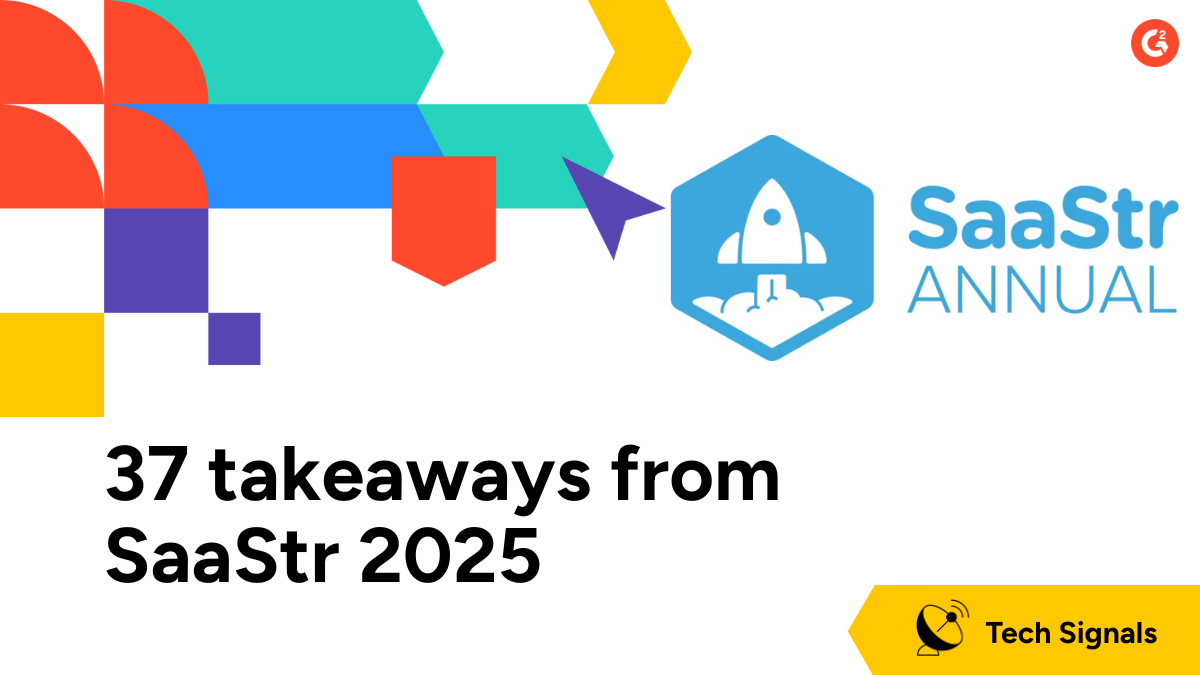The Changing Landscape of SaaS: Insights from SaaStr Annual + AI Summit 2025
In an era where four out of five software buyers leverage large language models (LLMs) for product research, SaaS companies encounter significant valuation challenges. As boardrooms demand quicker answers, the landscape of Software-as-a-Service is rapidly evolving. The recent SaaStr Annual + AI Summit 2025 showcased over 200 tactical sessions from more than 300 prominent industry speakers, offering valuable insights into the future of SaaS.
CMOs, AI, and the Boardroom: The Evolving Role
Traditionally seen as guardians of brand image, Chief Marketing Officers (CMOs) are now becoming vital business strategists. They are tasked with demonstrating measurable outcomes while driving AI integration across their organizations. The pressure to deliver on these fronts is mounting, especially as boards and CEOs expect accountability.
-
AI Replaces Traditional Marketing Channels: The SaaStr team reported a dramatic cut in marketing expenses, dropping from $188K in 2023 to just $200 in 2025, primarily due to the adoption of AI tools.
-
AI Stacks Take Center Stage: The question "What’s your AI stack?" has overtaken more traditional inquiries about marketing budgets, emphasizing the value of AI in optimizing marketing efforts.
-
Vendor Accountability: CMOs now prioritize accountability from existing vendors, focusing on AI-driven efficiency rather than simply adding more tools.
-
Real-Time Buyer Insights: Companies are utilizing AI agents targeted to buyer personas, enabling rapid validations of messaging, content, and go-to-market strategies.
-
Compliance in Regulated Industries: In sectors like legal tech or cybersecurity, accuracy remains paramount. Here, the focus for CMOs is on using LLMs for insights rather than mere content generation.
-
Daily AI Engagement is Transformative: Spending just 30 minutes daily on LLMs can lead to significant enhancements in go-to-market velocities across various domains.
-
AI Fluency as a Leadership Requirement: The need for foundational AI training within teams is becoming essential. Without it, the potential ROI from these tools may not be realized.
-
Data Quality Matters: AI cannot rectify poor data. Effective data management is an integral part of a successful AI strategy.
-
AI’s Role in Restructuring Teams: Progressive organizations are integrating AI agents as virtual members, allowing human employees to focus on creative and strategic tasks.
-
Focus on Impact Rather than Experimentation: There is a palpable shift from an exploratory mindset to one concentrated on verifying results quickly and effectively.
-
Marketing as Leadership: Marketing is now aligned with every aspect of the buyer journey, pitching its contributions in terms CEOs understand—pipeline and results.
-
Collaboration Across Functions: AI is dismantling silos, fostering collaboration between marketing, legal, security, and IT teams.
-
Educational Necessity over Hype: While boards may expect tenfold ROI, CMOs must manage expectations pragmatically, focusing on gradual, realistic growth.
-
Navigating Short-Term Cycles: Rapid tech and buying cycles necessitate a re-evaluation of go-to-market approaches.
-
The Call for Disruption: AI isn’t a mere tool; it signifies a fundamental shift. Companies that fail to adopt an "AI-first" strategy risk obsolescence.
-
Evolving Marketing Channels: Conventional outreach methods (like cold-calling) are declining in efficacy, with trust-driven channels like brand advocacy and social proof gaining ground.
- Adapting to AI-Influenced Marketing: As LLMs become vital decision-makers, marketing must target AI systems, not just human end-users.
AI, Sales, and Go-To-Market: A Hard Reset
The shift in enterprise software models heralds a departure from static tools reliant on human operators towards dynamic platforms infused with digital labor.
-
Rethinking Labor Models: AI agents are not just enhancing user experiences; they’re redefining operational structures by automating knowledge work and accessing new markets.
-
AI-Driven Outcomes: Businesses are starting to expect results from software platforms that include their own inherent digital workforce.
-
Accelerating AI Adoption: The AI integration curve is outpacing previous cloud transitions, pressing enterprises to act swiftly or risk becoming irrelevant.
- Workflow Transformations: The new generation of workers, familiar with AI tools, will push for updates to outdated processes, demanding efficiency.
Buyer Behavior Redefined by AI
The 2025 G2 Buyer Behavior Report highlights a striking shift in how products are researched and selected.
-
Evolving Best Practices: What may be effective today could be counterproductive a few years from now as AI continues to reshape GTM strategies.
-
Shifts in Buying Preferences: A remarkable 80% of buyers now initiate research through AI tools, not traditional search engines.
-
Streamlined Shortlist Creation: Buyers are actively prioritizing quick, AI-generated recommendations over extensive evaluations.
- Emerging Data Hierarchies: First-party data is becoming less impactful as AI and review platforms dominate decision-making signals.
Understanding the SaaS-y Reality
With challenges like rising customer acquisition costs (CAC) and increasing churn, AI isn’t just a support mechanism—it’s a primary driver for SaaS growth.
-
AI’s Role in Growth Models: As traditional frameworks struggle under current pressures, AI-first approaches are emerging as the new growth engine.
-
Evolving Buyer Expectations: purchasing decisions are being increasingly managed by AI agents, meaning that companies must adapt their sales strategies accordingly.
-
Realigning Organizational Structures: As AI tools become more integrated, roles in tech-led positions gain importance over traditional HR functions.
- Churn Management through AI: Predictive models driven by AI are becoming crucial in maintaining customer retention.
Marketing in the Age of AI
The rapid changes resulting from AI’s rise are forcing marketers to rethink their practices, strategies, and methodologies.
-
Accelerated Innovation Cycles: The long, drawn-out innovation cycles typical of marketing are now evolving into dynamic, quarterly updates.
-
Navigating Choice Paralysis: CMOs face overwhelming choices, often burdened by the need to evaluate rapidly changing tools.
-
Trust Erosion Due to Over-Reliance on Automation: Automated mass communication is leading to a loss of trust, signaling the need for more authentic strategies.
-
Hybrid Workflows as a Strategy: Successful marketing strategies now intertwine AI capabilities with human creativity.
- Architectural Agility: Organizations thrive when they can execute numerous experiments efficiently, adjusting strategies as needed.
Moats of SaaS
As AI transforms competitive landscapes, the criteria for what constitutes a sustainable advantage are shifting.
-
The Importance of Data Quality: Companies are investing in establishing internal data processes that fuel AI success.
-
Fragility of Competitive Advantages: AI allows even small startups to pose a significant threat to established players.
- The Potential of Open Ecosystems: Building interconnected, AI-driven environments is enhancing competitive resilience and efficiency.
Practical Steps for SaaS Leaders
-
Audit Your AI Stack: Ensure that your tools provide tangible benefits rather than remaining unused.
-
Engage with AI: Your brand must be visible in AI outputs to ensure relevance.
-
Foster Team Training: Emphasis on AI fluency will yield better results than simply relying on tools.
-
Align GTM Strategies with Outcomes: Focus on creating processes that resonate with what buyers are looking for in today’s landscape.
- Prioritize Data Management: Having high-quality, structured data is essential for effective AI application.
Embracing these insights allows your organization to be not just reactive but also proactive in the face of disruptive changes wrought by AI in the SaaS space.





